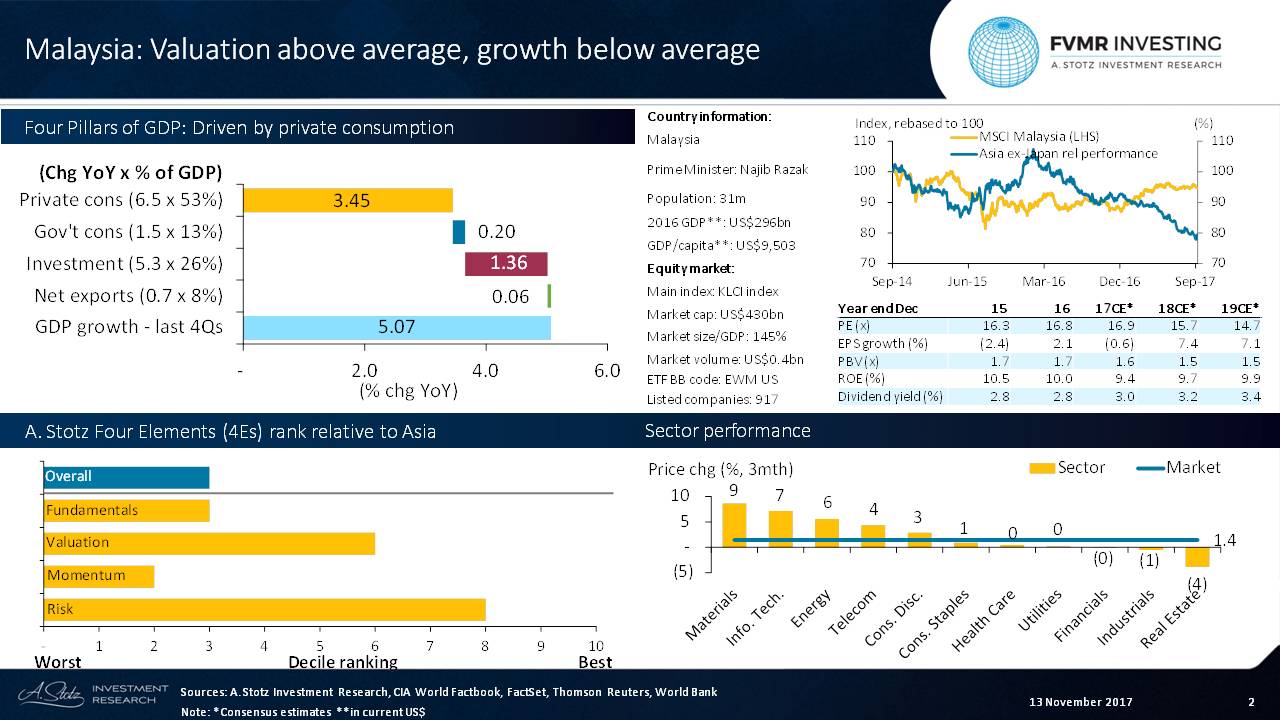Malaysian Stocks: Valuation above Average, Growth below Average
Watch the video with Andrew Stotz or read a summary of the country profile on Malaysia.
Four Pillars of GDP: Private consumption and investments
Malaysia’s GDP has been growing at a steady clip just above 5% over the last four quarters. Private consumption has been the main contributor to GDP growth, contributing almost 70% of it, but investments have also lent its hand.
Valuation above average, earnings growth below average
Malaysia is slightly more expensive as a whole, considering its price-to-earnings (PE) ratio relative to Asia, which is at about 17x for 2017CE*.
Earnings are the primary problem for the market, with analysts expecting a slight fall for the overall market in 2017. But investors may have been persuaded to stay with the attractive 3% dividend yield.
A. Stotz Four Elements: Malaysia’s rank relative to Asia
Overall, Malaysia is ranked as relatively unattractive, considering all our four elements: Fundamentals, Valuation, Momentum and Risk.
Fundamentals: Malaysia offers a low ROE below 10%.
Valuation: The price-to-book value is relatively cheap, and the dividend yield is above average.
Momentum: The market features poor earnings growth and poor price momentum.
Risk: The market has a low volatility profile.
Weak performance in the top 3 largest sectors in 3Q17
Top 3 largest sectors: Financials: 21% of the market; Industrials: 16%; Consumer Staples: 11%.
Best sector & stock: Materials: +8.6% & Press Metal Aluminium Holdings Bhd: +42.5%.
Worst sector & stock: Real Estate: -3.8% & Sunway Bhd: -45.0%.
*CE is consensus estimates
Are you investing in Malaysia?
If you like our research, share it with your friends.
DISCLAIMER: This content is for information purposes only. It is not intended to be investment advice. Readers should not consider statements made by the author(s) as formal recommendations and should consult their financial advisor before making any investment decisions. While the information provided is believed to be accurate, it may include errors or inaccuracies. The author(s) cannot be held liable for any actions taken as a result of reading this article.

